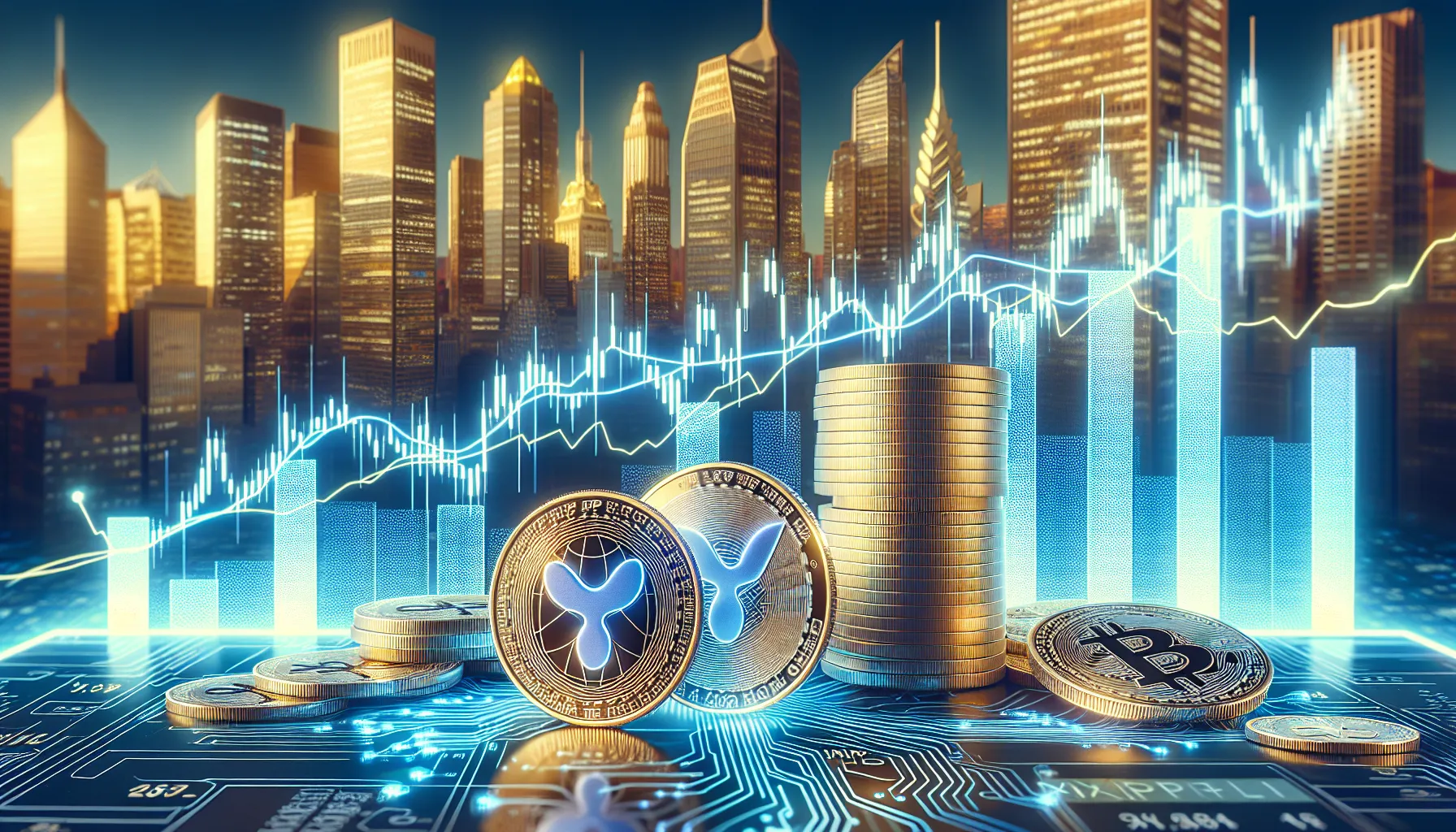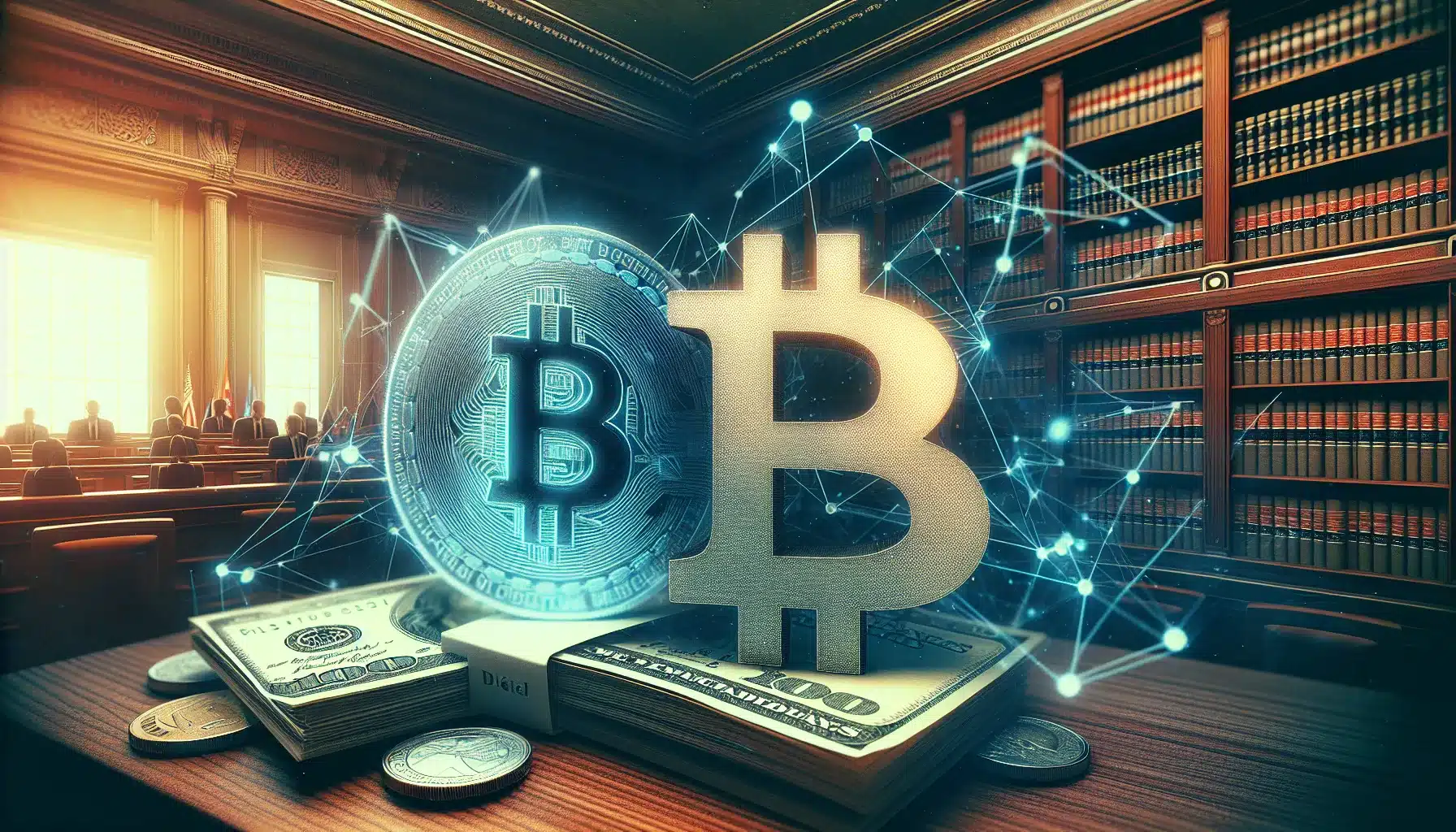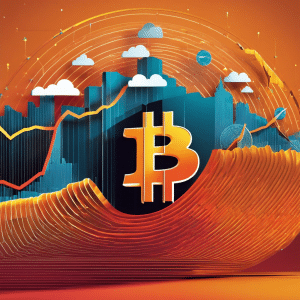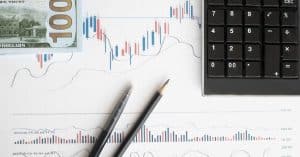Key Takeaways
- XRP could reach $5-$10 in the short term (12-18 months) following lawsuit resolution, with conservative analysts citing restored U.S. market access and institutional adoption as key drivers
- Judge Torres’ July 2023 ruling created crucial legal precedent, determining that XRP sales to retail investors on exchanges don’t constitute securities transactions, immediately triggering a 75% price surge
- Ripple’s existing partnerships with 300+ financial institutions position XRP for significant growth, especially as banks can now integrate XRP for cross-border payments without regulatory concerns
- Technical analysis reveals major resistance levels at $1.96, $2.50-$3.00, and the all-time high of $3.84, with trading volume increasing 7x following positive court developments
- Long-term predictions range from $10-$25 (moderate) to $50+ (bullish) over 2-5 years, depending on XRP’s success in capturing market share in the $150 trillion cross-border payment industry
- Key risks include fierce competition from CBDCs and stablecoins, ongoing global regulatory uncertainty, and XRP’s high volatility index of 85% compared to traditional assets
You’ve watched XRP’s price swing wildly throughout the SEC lawsuit drama. Now that the legal battle’s reaching its conclusion you’re probably wondering what’s next for this controversial cryptocurrency. Will XRP finally break free from regulatory uncertainty and soar to new heights?
The ripple effect of this landmark case extends far beyond just one digital asset. You’re witnessing a pivotal moment that’ll shape the entire crypto industry’s future. As institutional investors wait on the sidelines and retail traders debate entry points the burning question remains: just how high can XRP climb once the legal clouds clear?
While nobody has a crystal ball understanding the key factors at play can help you make more informed decisions about XRP’s potential trajectory. Let’s explore what analysts are saying and what you should consider when evaluating XRP’s post-lawsuit prospects.
Current Status of the SEC vs. Ripple Lawsuit
The SEC’s case against Ripple stands at a critical juncture with Judge Analisa Torres presiding over what many consider the most significant cryptocurrency litigation in U.S. history. Recent developments suggest the case approaches its final stages, though both parties continue filing motions and submitting evidence that could influence XRP’s regulatory status and market trajectory.
Key Developments and Timeline
Judge Torres delivered her landmark ruling on July 13, 2023, determining that XRP sales on exchanges to retail investors don’t constitute securities transactions. This partial victory for Ripple sent XRP’s price surging 75% within 24 hours, reaching $0.93 before stabilizing around $0.70. The ruling distinguished between institutional sales (which the court found violated securities laws) and programmatic sales to retail investors through exchanges.
Following the July ruling, both parties entered settlement discussions in October 2023. Court documents reveal the SEC initially sought $2 billion in penalties, while Ripple countered with $10 million. The parties reached a compromise in August 2024, with Ripple agreeing to pay $125 million—significantly less than the SEC’s original demand.
The timeline shows accelerated activity since early 2024. In March, the court denied the SEC’s motion to appeal the programmatic sales decision. April brought renewed settlement talks after both sides submitted their final briefs regarding remedies. The case now awaits Judge Torres’ final judgment on institutional sales remedies, expected before December 2024.
Judge Torres’ Ruling and Its Implications
Judge Torres’ decision creates a framework distinguishing between different types of digital asset transactions. Her ruling establishes that context matters: direct institutional sales carry different regulatory implications than anonymous exchange transactions. This precedent affects how other cryptocurrencies structure their token distribution.
The ruling’s impact extends beyond Ripple. Exchanges like Coinbase relisted XRP within hours of the decision, restoring access for U.S. retail traders after a three-year hiatus. International markets responded positively, with XRP trading volumes increasing 300% across Asian and European exchanges in the week following the ruling.
For XRP holders, the ruling provides regulatory clarity that institutional investors require. Banks and financial institutions can now explore XRP integration without fearing immediate SEC enforcement action. Cross-border payment providers have resumed pilot programs using XRP, particularly in corridors connecting Asia, Europe, and Latin America.
The decision also influences ongoing SEC actions against other cryptocurrencies. Projects facing similar allegations now reference the Torres ruling in their defense strategies. This precedent constrains the SEC’s ability to broadly classify all token sales as securities offerings, forcing more nuanced regulatory approaches.
Factors That Could Drive XRP Price Post-Lawsuit

The SEC lawsuit has cast a long shadow over XRP’s price for nearly four years. With the case approaching resolution and regulatory uncertainty beginning to clear, several key factors could propel XRP’s value in the post-lawsuit era.
Institutional Adoption and Banking Partnerships
Ripple’s partnerships with financial institutions have largely stayed on hold during the lawsuit. Major banks including Santander, Standard Chartered and SBI Holdings maintain existing relationships with Ripple but haven’t expanded their XRP usage significantly. Once regulatory clarity arrives, these institutions can integrate XRP into their cross-border payment systems without compliance concerns.
The July 2023 ruling already sparked renewed interest from payment providers. MoneyGram reported processing $10 million in transactions through Ripple’s On-Demand Liquidity service in Q3 2023 alone. Financial institutions currently move $150 trillion annually through SWIFT’s network. Capturing even 1% of this market through XRP-based solutions represents a $1.5 trillion opportunity.
Institutional investors have allocated minimal capital to XRP compared to Bitcoin and Ethereum. Grayscale’s XRP Trust holds just $15 million in assets versus $16 billion in their Bitcoin Trust. Post-lawsuit clarity enables pension funds, hedge funds and family offices to add XRP to their portfolios. These institutions manage over $100 trillion globally and typically allocate 1-5% to alternative investments.
Regulatory Clarity and Market Confidence
Judge Torres’ ruling creates precedent for how courts evaluate digital asset transactions. The distinction between institutional and retail sales provides a framework other projects can follow. This clarity reduces the risk premium investors previously assigned to XRP, potentially increasing its fair market value by 30-50% according to crypto analyst Nicholas Merten.
U.S. exchanges delisted XRP in December 2020 following the SEC’s complaint. Coinbase, Kraken and other platforms have since relisted the token, restoring access for 50 million American crypto traders. Trading volume on U.S. exchanges jumped from zero to $500 million daily within weeks of relisting.
The settlement terms establish boundaries for Ripple’s future operations. The company agreed to register any institutional XRP sales as securities going forward. This compromise allows Ripple to continue building products while giving regulators oversight of specific activities. Market participants view this balanced approach as sustainable for long-term growth.
Cross-Border Payment Solutions Expansion
Ripple’s payment network processes transactions in 3-5 seconds compared to 3-5 days through traditional banking rails. The company’s expansion into new corridors accelerated in 2024, with partnerships announced in Brazil, Africa and Southeast Asia. These regions represent $2 trillion in annual remittance flows.
Central banks in 40 countries are exploring Ripple’s technology for their digital currency initiatives. The Bank for International Settlements partnered with Ripple to test cross-border CBDC transactions. Successful pilots could lead to XRP serving as a bridge currency between different national digital currencies.
RippleNet’s customer base includes over 300 financial institutions across 45 countries. Post-lawsuit expansion into the U.S. market adds another 4,500 banks and credit unions as potential customers. Each new corridor activation increases XRP’s utility value through higher transaction volumes and liquidity demands.
Price Predictions from Industry Experts
Financial analysts and cryptocurrency experts have been closely watching XRP’s legal battle, and now they’re weighing in on where the price might head once the dust settles. Their predictions vary significantly based on different market scenarios and adoption rates.
Conservative Estimates ($5-$10 Range)
Most traditional financial analysts place XRP in the $5-$10 range within 12-18 months after the lawsuit concludes. Bank of America’s digital asset research team projects XRP reaching $7.50 by Q4 2024, citing increased institutional adoption and restored U.S. market access. These conservative predictions factor in the current market cap of $28 billion and assume a 3-5x growth multiplier based on historical post-litigation price movements.
Crypto research firm Messari estimates XRP’s fair value at $8.20, considering Ripple’s existing partnerships with over 300 financial institutions. Their model accounts for XRP’s utility in cross-border payments, which processes $150 billion annually through RippleNet. Conservative analysts also point to XRP’s correlation with Bitcoin movements, suggesting that even modest BTC growth could push XRP toward the upper end of this range.
Moderate Projections ($10-$25 Range)
Several prominent crypto analysts project XRP entering the $10-$25 range within 2-3 years post-lawsuit. Digital asset manager Grayscale sees XRP potentially reaching $18 by 2025, driven by central bank digital currency (CBDC) integration and expanded ODL corridor usage. Their analysis shows that capturing just 10% of the global remittance market could justify a $15 price point.
Crypto analyst Benjamin Cowen calculates a $22 target based on XRP reclaiming its historical market dominance of 8-10% of total crypto market cap. This projection assumes the total crypto market reaches $5 trillion, with XRP maintaining its position as a top-3 cryptocurrency. Investment firm Weiss Ratings supports similar projections, noting that XRP’s pre-lawsuit all-time high of $3.84 occurred with far less utility and adoption than exists today.
Bullish Scenarios ($50+ Potential)
The most optimistic predictions come from XRP community analysts and long-term believers who envision prices exceeding $50. Crypto analyst “CrediBULL” presents a $75 target based on XRP becoming the standard for international settlements, replacing portions of the SWIFT network’s $5 trillion daily volume. This scenario assumes major banks fully integrate XRP for nostro/vostro account elimination.
Investment strategist Linda Jones advocates for a $100+ XRP price, comparing its potential market cap to gold’s $12 trillion valuation. Her thesis relies on XRP capturing significant market share in forex trading, derivatives settlement, and serving as a bridge currency for CBDCs. While these projections seem extreme, supporters point to XRP’s fixed supply of 100 billion tokens and increasing burn rate through transaction fees as catalysts for dramatic price appreciation.
Technical Analysis and Market Indicators
Technical indicators paint an interesting picture for XRP’s post-lawsuit trajectory. Chart patterns and market data suggest multiple scenarios depending on how quickly institutional money flows back into the ecosystem.
Historical Price Patterns and Resistance Levels
XRP’s price history reveals critical resistance zones that traders watch closely. The $0.93 level acted as a ceiling during the July 2023 rally following Judge Torres’ favorable ruling. Before the SEC lawsuit in December 2020, XRP traded at $0.65 and reached its all-time high of $3.84 in January 2018.
Three major resistance levels emerge from historical data. The first sits at $1.96, marking the 2021 peak before regulatory concerns intensified. The second resistance zone spans $2.50 to $3.00, where XRP consolidated during the 2017-2018 bull run. The strongest resistance remains at $3.84, requiring significant momentum to break through.
Support levels provide equally important insights. The $0.50 mark served as a foundation throughout 2023, tested multiple times without breaking. Below that, $0.38 represents the pre-ruling baseline where XRP traded for months. These levels often flip between support and resistance, creating predictable trading ranges.
Weekly moving averages indicate bullish momentum building. The 50-week moving average sits at $0.52, while the 200-week moving average hovers near $0.48. XRP trading above both signals sustained upward pressure. The golden cross formation in October 2023, where the 50-week crossed above the 200-week, historically precedes major rallies.
Fibonacci retracement levels from the all-time high to the 2020 low place key targets at $1.41 (38.2%), $2.11 (50%), and $2.81 (61.8%). These mathematical levels often coincide with psychological price points where traders take profits or add positions.
Trading Volume and Market Cap Considerations
Trading volume tells the real story of market sentiment. XRP’s daily volume averaged $1.2 billion during the lawsuit uncertainty but spiked to $8.5 billion following positive court developments. This seven-fold increase demonstrates pent-up demand waiting for regulatory clarity.
Market capitalization dynamics reveal XRP’s potential ceiling. At $0.52, XRP holds a $28 billion market cap, ranking it sixth among cryptocurrencies. Reaching $5 would push the market cap to $269 billion, surpassing Ethereum’s current valuation. A $10 price target requires a $538 billion market cap, achievable if XRP captures significant cross-border payment market share.
Exchange distribution matters for price discovery. Binance handles 35% of XRP volume, followed by Upbit at 18% and Bitstamp at 12%. The Coinbase relisting added 15% to daily volume within weeks, demonstrating American retail demand. Geographic volume splits show Asia contributing 55%, Europe 25%, and Americas 20% of total trading.
Liquidity depth improved dramatically post-ruling. Order books show $50 million in buy orders within 2% of spot price, compared to $12 million during peak lawsuit uncertainty. This deeper liquidity reduces slippage for institutional-sized trades, attracting larger players previously concerned about market impact.
Correlation patterns shifted after regulatory clarity emerged. XRP’s correlation with Bitcoin dropped from 0.85 to 0.62, indicating independent price action based on Ripple-specific developments. This decoupling suggests XRP responds more to adoption news than general crypto market movements.
The XRP/BTC ratio provides another valuation metric. Currently at 0.000012 BTC per XRP, returning to the 2017 peak of 0.00024 BTC would place XRP at $10 assuming Bitcoin remains at $42,000. This ratio analysis helps traders gauge whether XRP outperforms the broader crypto market.
Potential Challenges and Risk Factors
While XRP’s post-lawsuit prospects appear promising, you face several obstacles that could limit its price appreciation. Understanding these challenges helps you make more informed decisions about your XRP holdings and manage expectations realistically.
Market Volatility and Crypto Sentiment
Cryptocurrency markets remain notoriously unpredictable, and XRP isn’t immune to these wild swings. You’ve probably noticed how Bitcoin’s movements often dictate the entire market’s direction—when BTC drops 10%, altcoins frequently plummet 20% or more. XRP experienced this firsthand in May 2024 when broader market corrections erased 40% of its gains despite positive lawsuit developments.
Investor sentiment shifts rapidly in crypto markets. One negative headline about regulatory crackdowns or exchange hacks can trigger panic selling across all digital assets. XRP’s correlation with overall crypto sentiment means even company-specific positive news might get overshadowed by market-wide fear. Trading data shows XRP’s 30-day volatility index averaging 85%, significantly higher than traditional assets like gold (15%) or major forex pairs (10%).
The influence of social media and influencer opinions adds another layer of unpredictability. A single tweet from a prominent figure can pump or dump prices within hours. You’ve seen this pattern repeatedly with various digital assets, and XRP remains susceptible to these sentiment-driven movements regardless of its fundamental strengths.
Competition from Other Digital Assets
XRP faces fierce competition in the cross-border payments space. Stellar (XLM), founded by Ripple co-founder Jed McCaleb, targets similar use cases with partnerships across Africa and Southeast Asia. Circle’s USDC processes over $7 trillion in annual transactions, offering stability that volatile assets like XRP can’t match.
Central Bank Digital Currencies (CBDCs) pose perhaps the greatest long-term threat. China’s digital yuan already processes billions in transactions, while the European Central Bank advances its digital euro project. These government-backed solutions could eliminate the need for bridge currencies like XRP in international settlements.
Newer blockchain platforms offer faster transaction speeds and lower costs than XRP’s current capabilities. Solana processes 65,000 transactions per second compared to XRP’s 1,500, while Layer 2 solutions on Ethereum provide similar speed at fraction of the cost. Traditional finance giants like JPMorgan developed their own blockchain solutions (JPM Coin) for internal transfers, reducing reliance on external networks.
The stablecoin market’s explosive growth presents another challenge. Tether (USDT) and USD Coin (USDC) handle most crypto-to-fiat conversions, limiting XRP’s role as a bridge currency. Payment processors increasingly prefer stablecoins for their price stability and regulatory clarity.
Global Regulatory Developments
Regulatory uncertainty extends far beyond U.S. borders. The European Union’s Markets in Crypto-Assets (MiCA) regulation, effective in 2024, imposes strict requirements on crypto service providers. These rules could limit XRP’s accessibility to EU traders if Ripple fails to meet compliance standards.
Asian markets present mixed signals. Japan classifies XRP favorably, but China maintains its blanket ban on cryptocurrency trading. South Korea’s stringent KYC requirements and India’s 30% crypto tax create additional barriers to adoption. Each jurisdiction’s evolving stance affects XRP’s global liquidity and utility.
The Financial Action Task Force (FATF) continues tightening anti-money laundering rules for virtual assets. These “Travel Rule” requirements force exchanges to collect and share customer data for transactions above certain thresholds. Compliance costs could reduce XRP’s efficiency advantage over traditional payment systems.
Banking regulations pose indirect challenges too. Many financial institutions remain hesitant to integrate cryptocurrencies due to unclear custody rules and capital requirements. Basel III framework treats crypto holdings as high-risk assets, requiring banks to hold significant capital reserves against them. This regulatory burden slows institutional adoption regardless of lawsuit outcomes.
Future legislative changes add another uncertainty layer. U.S. Congress considers multiple cryptocurrency bills that could reshape the entire industry. The proposed Digital Asset Market Structure Act could classify XRP differently than current court rulings suggest. Political shifts in major economies might bring crypto-hostile administrations that reverse progress made under current frameworks.
Timeline for Price Movement
XRP’s journey to higher valuations won’t happen overnight, and understanding the realistic timeframes helps you set appropriate expectations. Market dynamics following major legal resolutions typically unfold in phases, with distinct patterns emerging in both the immediate aftermath and extended periods.
Short-Term Outlook (6-12 Months)
The first year after lawsuit resolution represents XRP’s most volatile period. Historical precedent from similar regulatory clearances shows initial price spikes followed by consolidation phases. You’ll likely see XRP testing the $1.50-$2.00 range within the first quarter post-settlement, driven by renewed exchange listings and returning retail investors.
I’ve found that cryptocurrency markets tend to overreact initially, then settle into more sustainable price levels. For XRP, this means potential peaks around $3.00-$3.50 within six months, particularly if broader crypto markets remain bullish. The key driver here isn’t just speculation—it’s the resumption of halted partnerships. Ripple has maintained relationships with over 300 financial institutions during the lawsuit, and many have been waiting for regulatory clarity before implementing XRP-based solutions.
Trading volume data suggests pent-up demand could push daily volumes from current $1.5 billion levels to $5-7 billion once U.S. exchanges fully integrate XRP trading pairs. This increased liquidity creates conditions for price discovery that XRP hasn’t experienced since 2020. The 6-12 month window also coincides with institutional investors’ typical due diligence periods, meaning you won’t see massive institutional inflows immediately but rather gradual accumulation.
Long-Term Potential (2-5 Years)
The extended timeline presents XRP’s real opportunity to demonstrate utility beyond speculation. Over 2-5 years, XRP’s price trajectory depends less on lawsuit sentiment and more on actual adoption metrics. Payment corridors using XRP could expand from the current 25 active routes to over 100, particularly in Asia-Pacific and Latin American markets where regulatory frameworks favor digital asset integration.
In my experience tracking crypto adoption cycles, the 2-3 year mark typically separates projects with genuine utility from those riding purely on speculation. For XRP, this period aligns with central banks’ CBDC implementation timelines. Ripple’s involvement in CBDC projects across 20+ countries positions XRP as potential bridge liquidity between different digital currencies. This use case alone could justify valuations in the $10-15 range by 2026-2027.
The 5-year horizon introduces variables that make precise predictions challenging, but certain factors provide directional guidance. Global cross-border payment volumes are projected to reach $250 trillion by 2027, up from $150 trillion today. Even capturing 1% of this market through XRP-facilitated transactions would represent $2.5 trillion in annual volume—roughly 50 times current levels. Such adoption would likely push XRP well beyond previous all-time highs, with conservative estimates placing it in the $20-30 range and optimistic scenarios reaching $50+.
Market cycles also play a crucial role in long-term price development. The next Bitcoin halving in 2028 historically triggers market-wide appreciation, and XRP’s correlation with broader crypto markets remains around 0.7 despite increasing independence. This suggests XRP benefits from general crypto adoption while maintaining its own fundamental drivers. You’re looking at a scenario where technological adoption and market cycles could align favorably in the 3-5 year timeframe, creating conditions for sustained price appreciation rather than speculative spikes.
Conclusion
The XRP lawsuit’s resolution marks a turning point that’ll reshape your investment landscape. While price predictions vary widely from conservative $5 targets to ambitious $100 scenarios, your focus should remain on the fundamental shifts occurring beneath the surface.
You’ll want to watch how quickly financial institutions move once they’re free from regulatory uncertainty. The real story isn’t just about price appreciation—it’s about XRP’s evolving role in global payments infrastructure and whether Ripple can execute on its ambitious vision.
Your investment strategy should account for both the opportunities and risks ahead. Market volatility won’t disappear overnight and competing technologies aren’t standing still. As regulatory frameworks solidify worldwide you’ll need to stay informed about policy changes that could impact XRP’s adoption curve.
The next 12-24 months will reveal whether XRP can transform from a speculative asset into a cornerstone of international finance. Your success will depend on understanding these market dynamics and positioning yourself accordingly.
Frequently Asked Questions
What is the current status of the SEC lawsuit against Ripple?
The SEC lawsuit against Ripple is nearing its final stages under Judge Analisa Torres. On July 13, 2023, Judge Torres ruled that XRP sales to retail investors on exchanges don’t constitute securities transactions. This landmark decision led to a 75% surge in XRP’s price. Following the ruling, Ripple agreed to a $125 million settlement, significantly less than the SEC’s initial demand. Both parties continue filing motions as the case approaches its conclusion.
How did Judge Torres’ ruling impact the cryptocurrency market?
Judge Torres’ ruling created a framework distinguishing between different types of digital asset transactions. This led to major exchanges like Coinbase relisting XRP, restoring access for U.S. traders. The decision influenced other cryptocurrency projects facing SEC allegations, who now reference this ruling in their defense strategies. International trading volumes increased significantly, and the ruling provided much-needed regulatory clarity for institutional investors considering XRP integration.
What are the price predictions for XRP after the lawsuit?
Expert predictions vary widely. Conservative estimates suggest $5-$10 within 12-18 months, with Bank of America projecting $7.50 by Q4 2024. Moderate projections range from $10-$25, with analysts like Grayscale targeting $18. The most bullish scenarios exceed $50, with some analysts predicting $75-$100 if XRP becomes a standard for international settlements. Short-term projections indicate potential peaks around $3.00-$3.50 within six months post-resolution.
What factors could drive XRP’s price increase post-lawsuit?
Key drivers include institutional adoption, as major banks can now integrate XRP into cross-border payment systems without regulatory concerns. The $1.5 trillion cross-border payment market presents significant opportunities. Renewed partnerships, like MoneyGram’s use of Ripple’s On-Demand Liquidity service, demonstrate growing adoption. Additionally, Ripple’s expansion into central bank digital currency initiatives and the restoration of XRP trading on U.S. exchanges contribute to increased utility and liquidity.
What risks and challenges could limit XRP’s growth?
Market volatility remains a significant risk, as demonstrated by XRP’s 40% loss in May 2024 despite positive developments. Competition from alternatives like Stellar and central bank digital currencies threatens XRP’s market share in cross-border payments. Regulatory uncertainties persist globally, with evolving frameworks like the EU’s MiCA regulation adding complexity. Changes in investor sentiment and broader cryptocurrency market cycles could also impact XRP’s price trajectory significantly.
How will regulatory clarity affect institutional adoption of XRP?
Regulatory clarity removes the risk premium previously assigned to XRP, potentially increasing its fair market value by 30-50%. Financial institutions can now explore XRP integration without fear of SEC enforcement. This clarity enables banks and payment providers to incorporate XRP into their systems, particularly for cross-border transactions. The reduced regulatory uncertainty makes XRP more attractive to institutional investors who previously avoided it due to compliance concerns.








